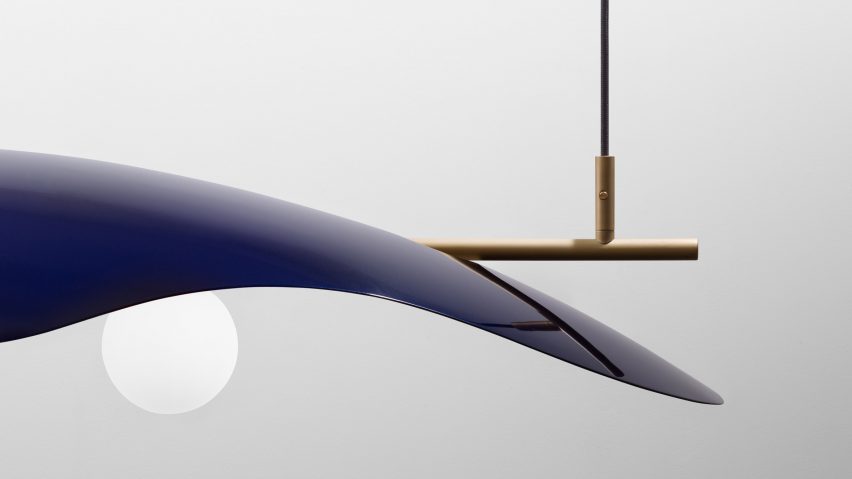
Earth To Sky is a range of sculpted aluminium lights by Doshi Levien
London studio Doshi Levien has self-produced a collection of lights using the techniques employed to make and repair cars.
Earth To Sky is a range of seven lamps made using automotive aluminium, designed to bridge the gap between sculptural and functional objects.
The collection includes two table lamps, a ceiling light and a series of wall-hung lights, all designed as pieces of art, as well as to provide illumination.
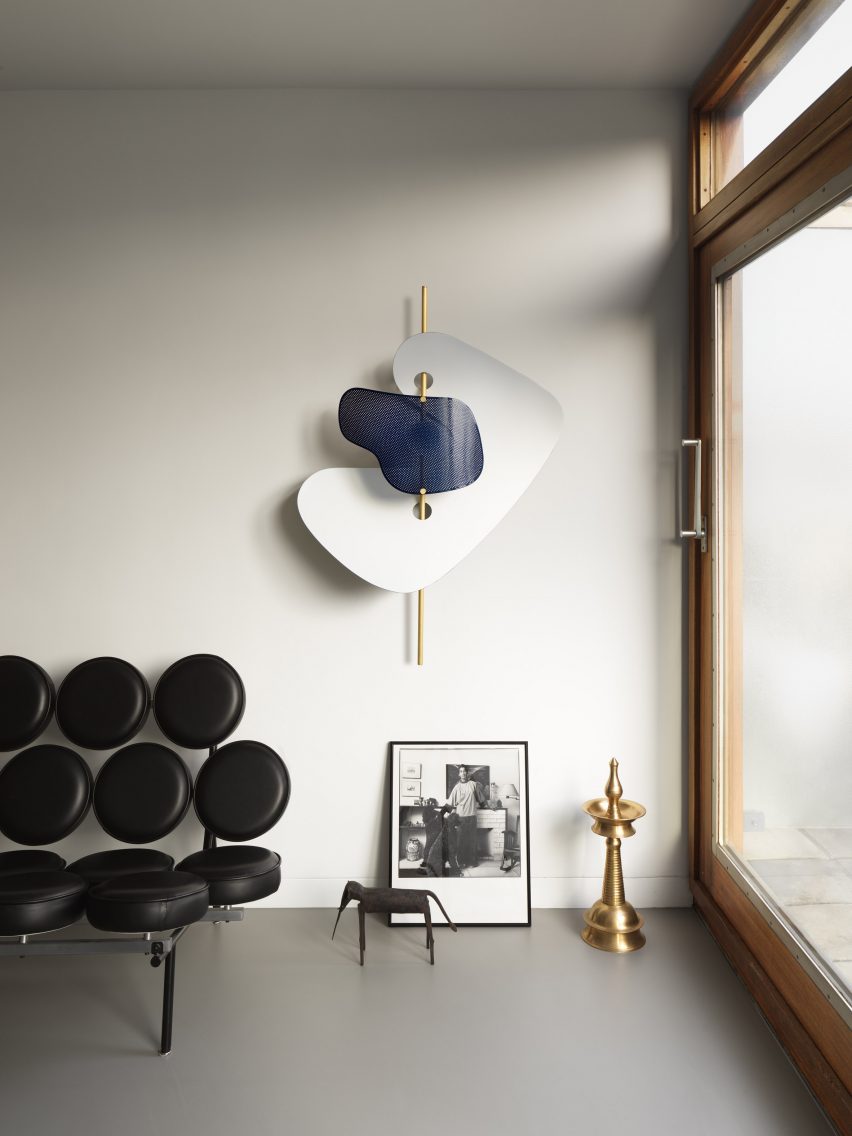
It is the first collection that Doshi Levien has produced entirely itself from conception through to production – a move described as a "brand new step" for the studio.
"The reason we started this project was to have complete freedom," said studio founders Nipa Doshi and Jonathan Levien.
"Usually we work with experienced design manufactures and brands who produce our designs. With Earth to Sky, it is the first time we have designed, developed and managed the production of pieces from start to finish."
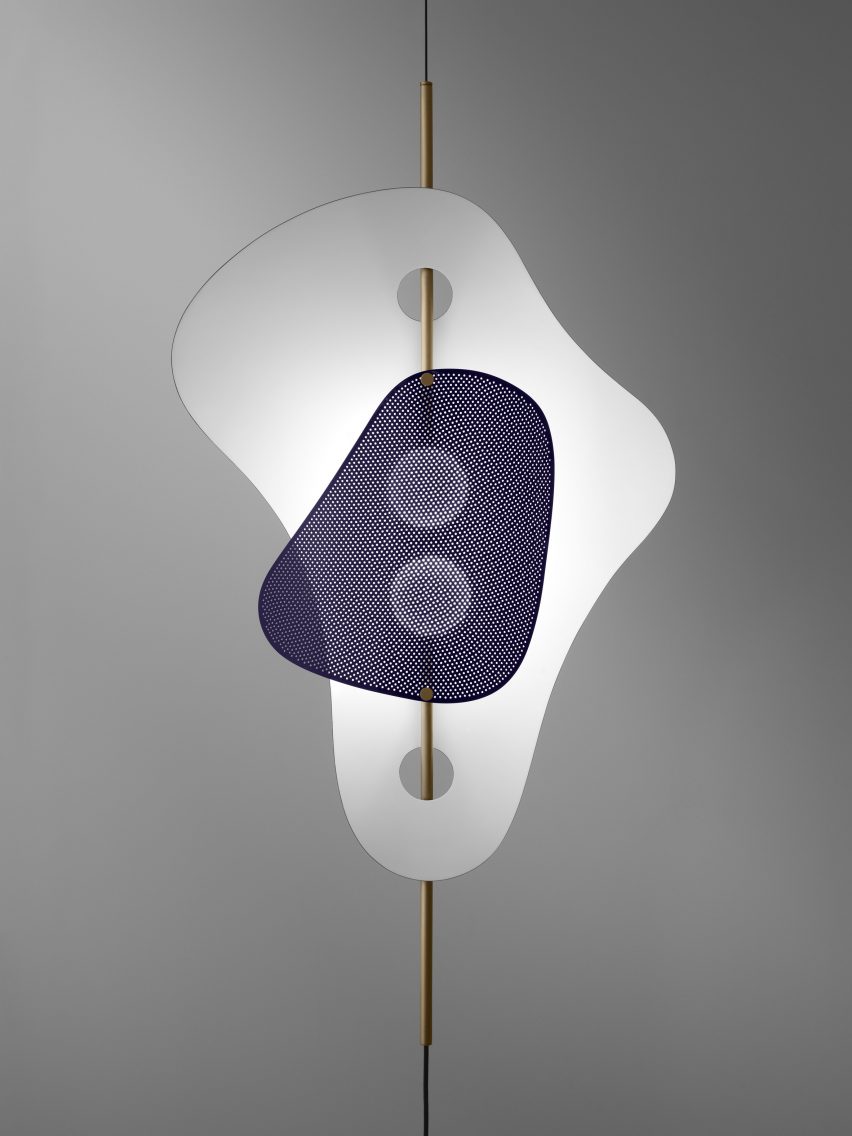
A wall-mounted light features a vertical rod of brass that stands over a metre high, with interlocking concave and convex pieces of solid and perforated aluminium, one of which is pierced by the rod in two places.
The light comes in single and double bulb variations with differing overlapping forms.
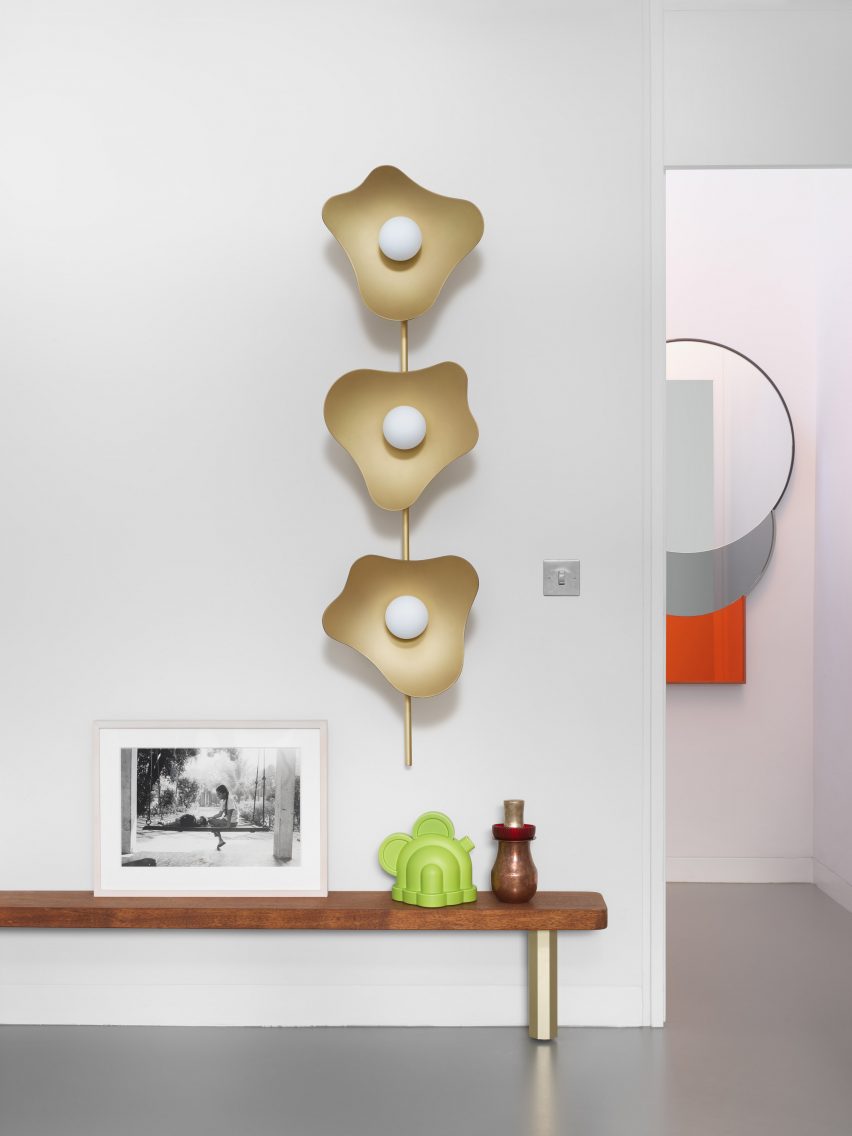
The triple-suspension light is a line of bulbs along a brass bar, shaded by an undulating blue disc, whilst a triple sconce lines up three irregular metal forms that resemble flowers along a vertically placed bar.
The designers worked with a Ferrari restorer to achieve a colour that appears to be black at first glance, then becomes deep blue with a metallic fleck as you approach.
"I was thinking about what attracts me to fine craftsmanship," said Levien. "I realise that it's the idea that something has been made to the best of man's ability within the limitations of materials and processes."
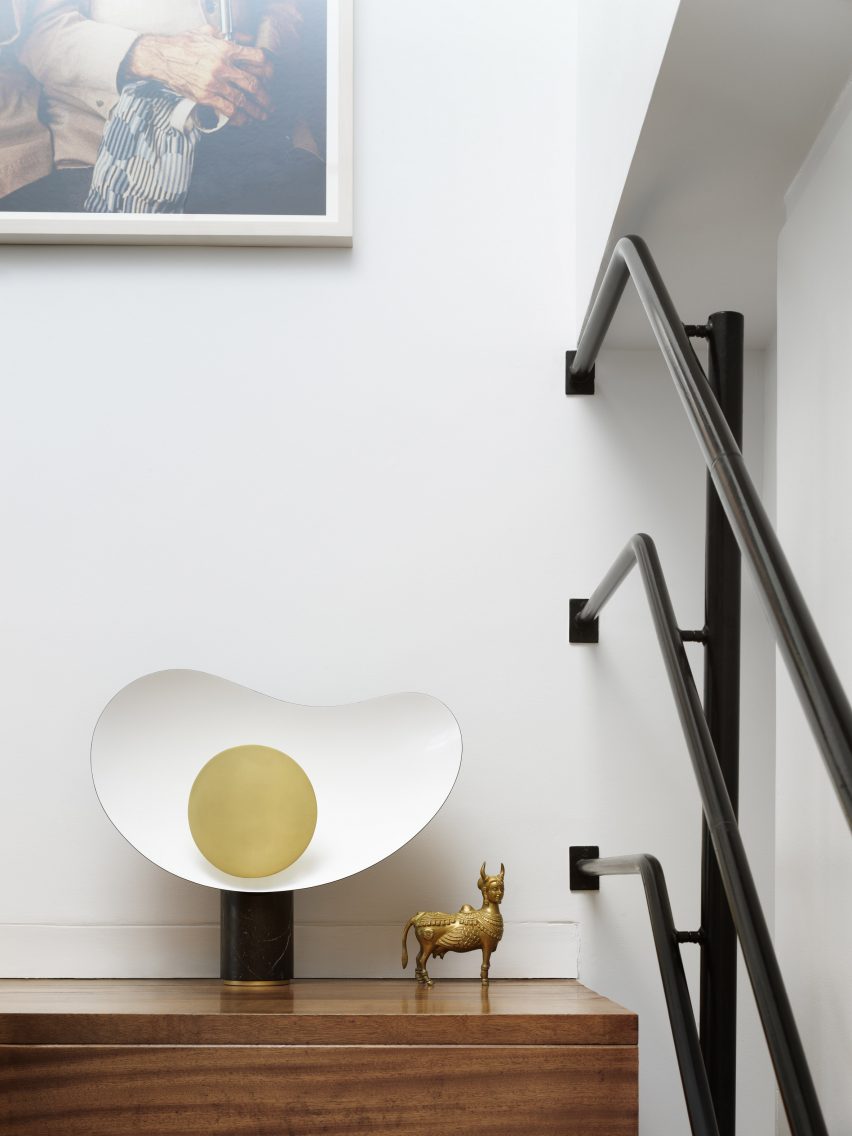
One of the table lamps sits on a cylindrical marble base. An exposed golden bulb that rests inside a concave aluminium form.
The other also has a cylindrical base, this time made from a tube of steel with a flat blue top that echoes the irregular shapes found throughout the series.
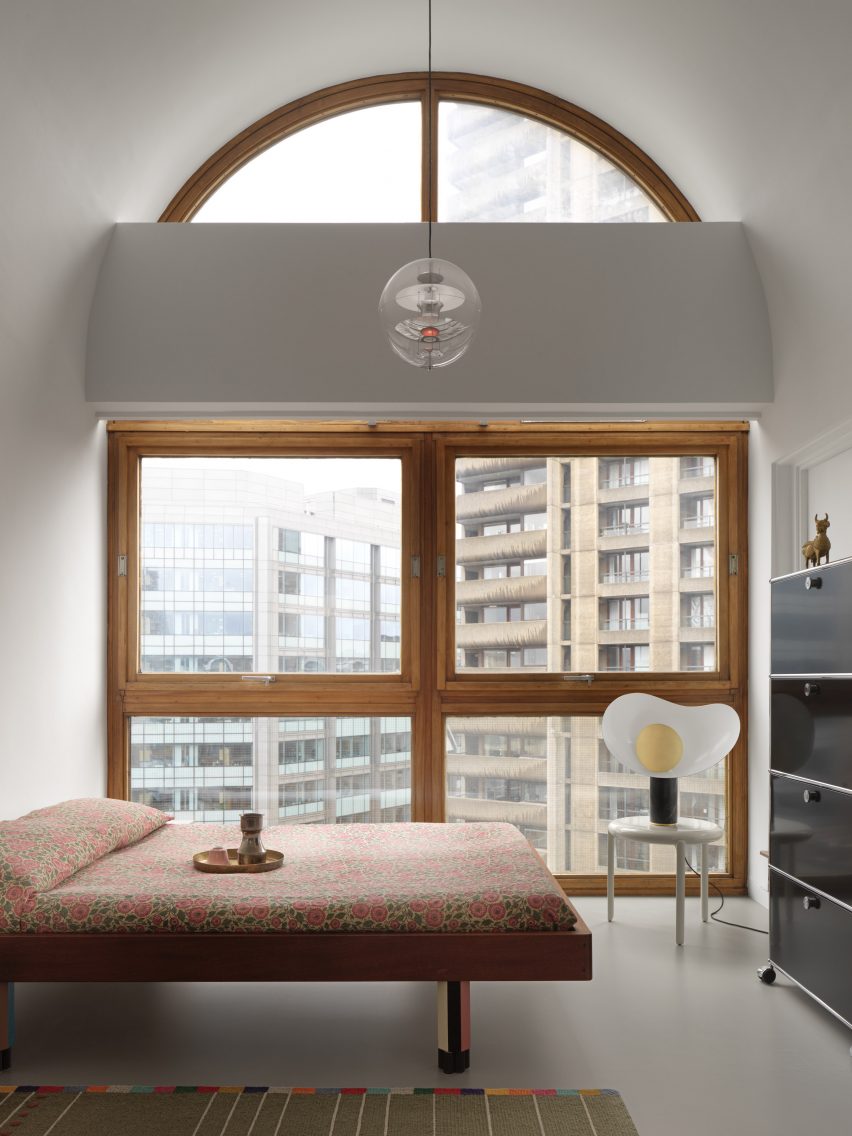
"The collection perfectly symbolises the idea of earth to sky," said the studio. "Earth through the hand craftsmanship, the hammer on metal, the heaviness of the materials. Sky with the aerial, ethereal quality of the sculptures, like precious creatures suspended in air."
All the shades are made from the automotive-grade aluminium.
The studio applied the process of pattern cutting used to create complex garments in the clothing industry to the metal, to create the sinuous curved forms.
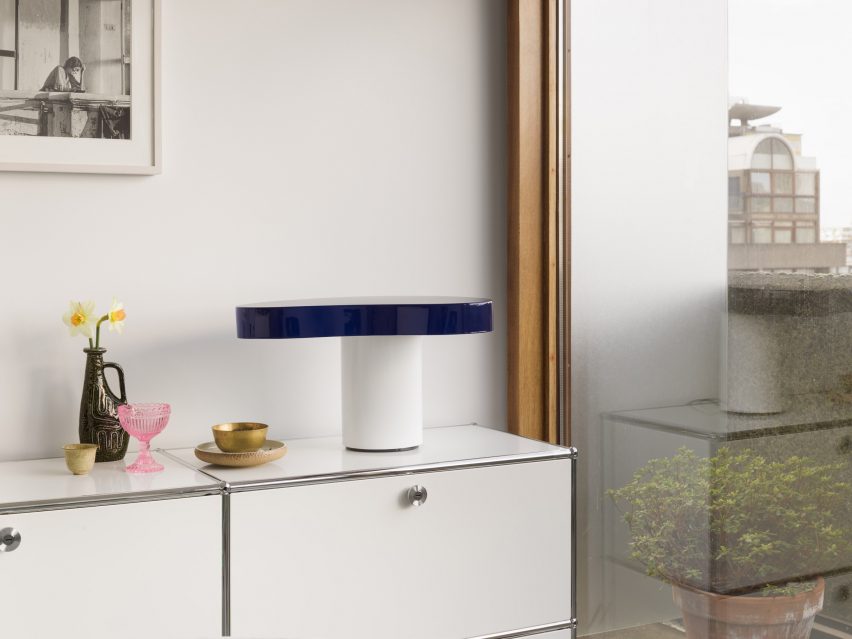
The metal is shaped using the machine rollers often employed when restoring classic cars, then beaten with a mallet on a wooden block before being welded together to create its finished shape.
This part of the shaping and making of the metal shade elements draw heavily on the automotive industry.
Doshi even used a hole-punch to pierce one of the shapes: "We then realised we no longer had just a composition, but an actual structure. A very organic sculpture."
The initial stage of experimentation began more than three years ago with a series of free-form sketches.
"I remember the exact moment the idea arrived. I was sketching, and exploring the coming together of linearity and geometry, with free form," explained Jonathan Levien.
"This balance, this interplay is really a subject close to my heart. I was drawing fine lines next to intuitive, curvaceous, sculptural forms."
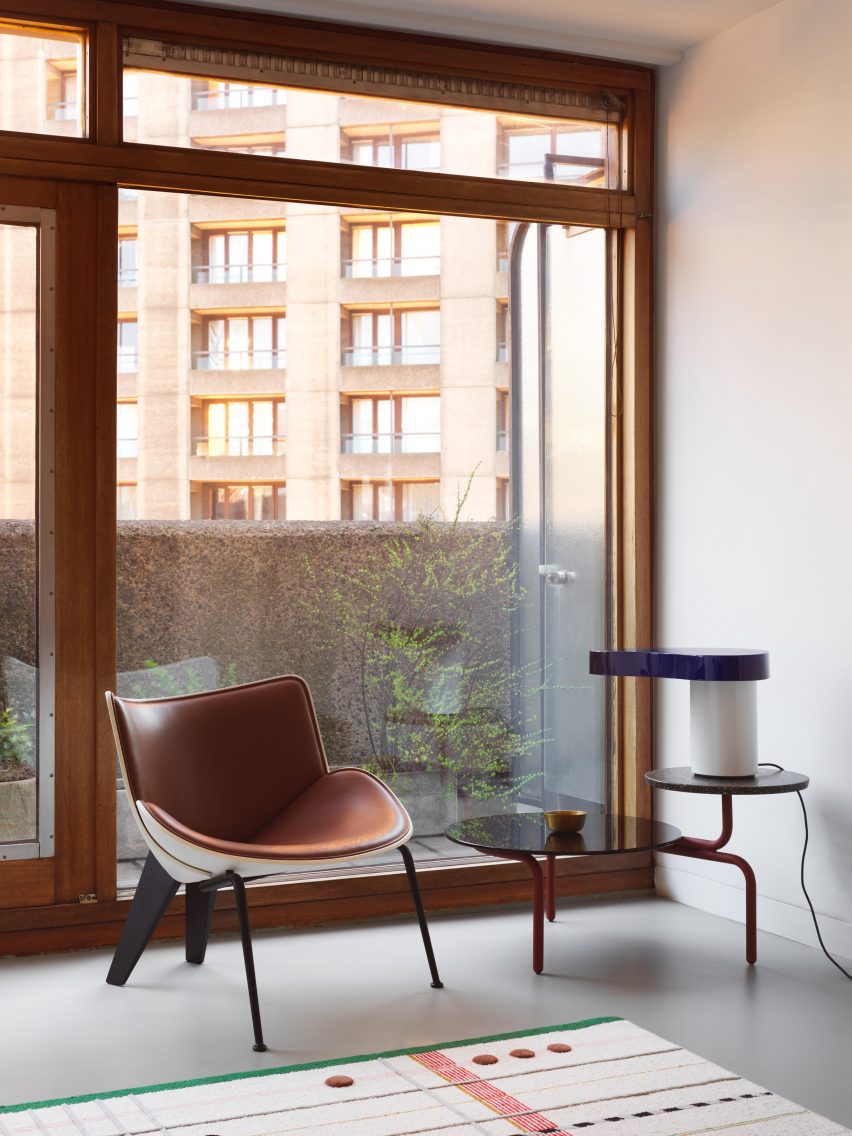
Both Doshi and Levien studied at the Royal College of Art in London before establishing their studio in east London in 2000.
Their work straddles genres from furniture to textiles to floor coverings, often marrying craftsmanship with the precision of industrial design.
Levien originally trained in cabinet making, whilst Doshi was brought up in India and studied at the National Institute of Design before moving to London. These varied experiences have fed into the studio's work.
Doshi Levien has previously produced a lamp and tapestry-covered daybed that drew on Le Corbusier's masterplan for the city of Chandigarh, as well as a collection of furniture for the British high-street chain John Lewis.
Images are by Jonas Lindström .